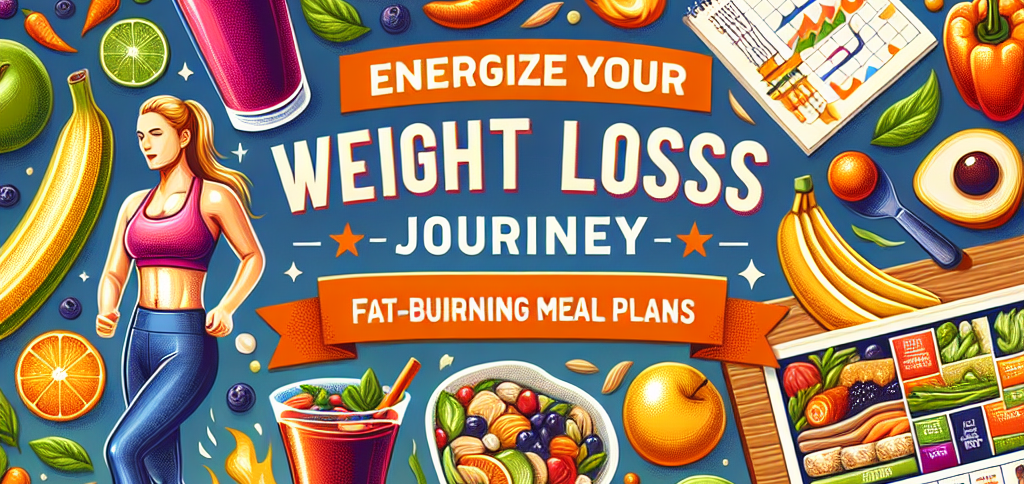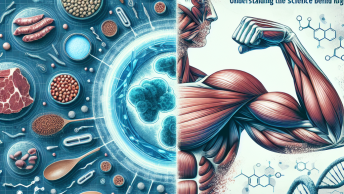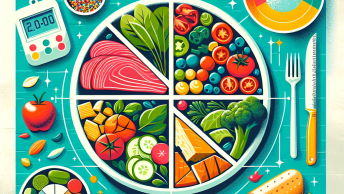Embarking on a journey towards fat loss can be daunting, especially when it comes to meal planning. However, having a structured meal plan can significantly simplify the process, make it more enjoyable, and improve your chances of success. In this article, we will outline ten key strategies for creating an effective fat loss meal plan that caters to your lifestyle and nutritional needs.
1. Set Clear Goals
The first step in developing a fat loss meal plan is to establish clear, achievable goals. Whether you want to lose a specific amount of weight, reduce body fat percentage, or fit into a particular clothing size, having a defined goal will help keep you motivated. Write your goals down and review them regularly to stay accountable.
2. Understand Your Caloric Needs
To effectively lose fat, you need to create a caloric deficit, which means consuming fewer calories than your body burns. Start by calculating your Basal Metabolic Rate (BMR) and then factor in your activity level to determine your Total Daily Energy Expenditure (TDEE). Use an online calculator or consult with a nutritionist for accurate insights. This will provide a foundation for how many calories you should consume daily.
3. Prioritize Whole Foods
Choosing whole, nutrient-dense foods is essential for a successful fat loss meal plan. These foods are typically lower in calories and higher in essential nutrients compared to processed foods. Focus on incorporating plenty of vegetables, lean proteins, whole grains, and healthy fats into your meals. Think spinach, quinoa, chicken breast, and avocados instead of pre-packaged snacks and fast food.
4. Plan Your Meals Ahead of Time
Meal prepping can save you time, money, and help you maintain your fat loss meal plan. Dedicate a day of the week to plan and prepare your meals in advance. This can involve cooking dishes in bulk, portioning them into containers, and storing them for the week ahead. Having meals ready to go minimizes the temptation to indulge in unhealthy choices when hunger strikes.
5. Incorporate Balanced Macros
A well-rounded diet includes a balance of macronutrients: carbohydrates, proteins, and fats. To optimize fat loss, aim for a meal composition of approximately 40% carbohydrates, 30% protein, and 30% healthy fats. This balance will ensure you have sustained energy levels, proper muscle maintenance, and adequate satiation, keeping cravings at bay.
6. Include a Variety of Foods
Sometimes, monotony can creep into your meal plan, leading to boredom and, ultimately, dietary slips. To combat this, include a variety of foods that you enjoy. Explore different recipes and cuisines to keep your meals exciting. You could incorporate different protein sources like fish, turkey, or legumes, and experiment with various cooking methods. Remember, healthy eating doesn’t have to be dull!
7. Stay Hydrated
Hydration plays a significant role in weight management and overall health. Often, people confuse thirst with hunger, leading to unnecessary snacking. Aim to drink at least half of your body weight in ounces of water daily. Keeping a reusable water bottle on hand and setting reminders to drink can help you stay on track. Consider sipping on herbal teas or infusing your water with fruits for flavor without added calories.
8. Be Mindful of Portion Sizes
While healthy foods are essential, portion control remains crucial in a fat loss meal plan. Pay attention to serving sizes and be mindful of the quantity of food you’re consuming. Utilize measuring cups or a food scale if needed, and try to practice intuitive eating, where you listen to your body’s hunger cues to avoid overeating.
9. Allow for Occasional Treats
Denying yourself the occasional indulgence can lead to feelings of deprivation, ultimately setting you up for cravings and overeating. Instead of eliminating treats altogether, practice moderation. Incorporate small portions of your favorite sweet or savory snacks occasionally, allowing yourself to satisfy cravings without derailing your progress.
10. Track Your Progress
Lastly, tracking your progress can significantly enhance your fat loss journey. Consider keeping a food diary, using a smartphone app, or taking progress photos. Monitoring your weight, measurements, and how your clothes fit can also provide valuable feedback on how your meal plan is working for you. Adjust your plan as needed and celebrate your successes along the way!
Conclusion
Creating a fat loss meal plan doesn’t have to be a burdensome task. By following these ten strategies, you can devise a sustainable and enjoyable meal plan that aligns with your goals and lifestyle. Remember to be patient with yourself and acknowledge that achieving fat loss is a journey, not a sprint.
For more resources and guidance on effective meal planning, Click Here to learn more about comprehensive tools that can simplify your weight loss journey. Embrace the changes, sustain your efforts, and enjoy the process of becoming a healthier version of you!






